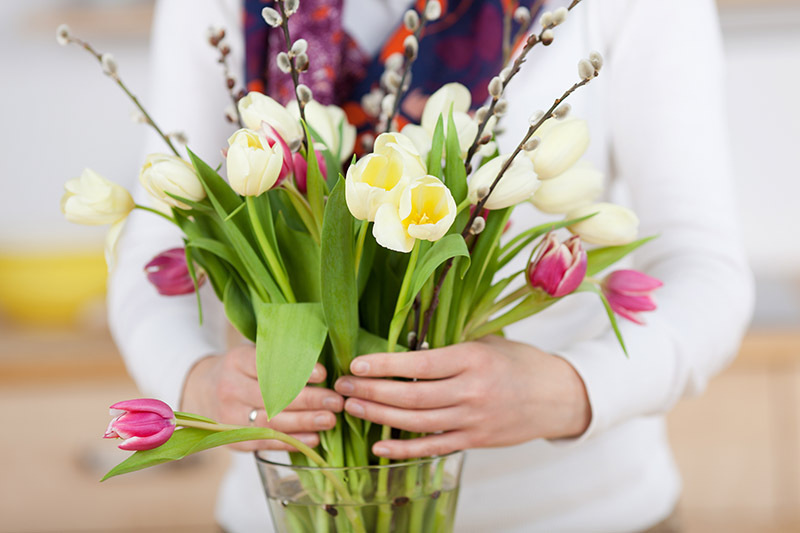Uncover 3 Straightforward Flower Preservation Strategies
Posted on 25/08/2025
Uncover 3 Straightforward Flower Preservation Strategies
Flowers capture some of life's most beautiful moments, whether received during celebrations, shared in memories, or enjoyed for their natural splendor. However, these colorful blooms are fleeting--wilting and fading away much faster than we wish. If you wish to cherish their magic for longer, you're in luck! Flower preservation techniques are easier and more accessible than ever.
In this comprehensive guide, we'll uncover 3 straightforward flower preservation strategies that will help you immortalize your favorite blossoms. Whether you're a hobbyist, a bride wanting to preserve your bouquet, or simply attached to your favorite roses, these methods are both accessible and effective.

Why Preserve Flowers?
Preserving flowers allows you to keep a tangible connection to memories, decorate your space sustainably, or even craft unique gifts. Not only can preserving blooms extend their beauty, but it also opens doors for creative projects such as artwork, jewelry, or keepsakes.
- Sentimental Value: Hold onto flowers from special events like weddings, anniversaries, or graduations.
- Decorative Purposes: Use preserved flower arrangements for long-lasting home decor.
- Sustainable Gifting: Turn dried flowers into memorable, eco-friendly presents.
3 Simple Flower Preservation Methods Explained
Let's unravel the three most reliable, easy-to-try strategies: air drying, pressing flowers, and using silica gel.
1. Air Drying Flowers: The Classic Approach
Air drying is one of the oldest and most natural ways to preserve flowers. This method gently dehydrates blooms, allowing you to keep their shape and most of their color. It is particularly effective for hardy, sturdy flowers such as roses, lavender, statice, and baby's breath.
Step-by-step Guide to Air Drying Flowers:- Choose Your Blooms: Select flowers at their peak, preferably just after they've fully opened. Remove any wilted or damaged petals and excess leaves from the stems.
- Bundle and Tie: Gather your flowers into small bunches (4-6 stems each is ideal). Tie them together tightly with twine or string; the stems will shrink as they dry, so secure them well.
- Hang Upside Down: Hang the bunches upside down in a warm, dry, dark, and well-ventilated space. Darkness preserves the flowers' color, while airflow speeds up the drying process and helps prevent mold.
- Wait and Check: Depending on humidity and flower type, this process takes from 1 to 3 weeks. Flowers will be dry and papery to the touch when ready.
- Store and Enjoy: Store dried flowers in a cool, dark space. Optionally, spritz with unscented hairspray to help reduce shedding and maintain shape.
- Easy and cost-effective flower preservation technique
- No special supplies needed
- Keeps flowers' original shape
- Some flowers may become brittle
- Colors may fade over time
2. Pressing Flowers: Flat and Fabulous
Pressing is another straightforward strategy to preserve flowers, particularly suitable for delicate blossoms or petals like pansies, violets, daisies, and ferns. Pressed flowers make beautiful bookmarks, cards, wall art, and journal decorations.
How to Press Flowers Effectively:- Flower Selection: Pick flowers that are fresh and not too thick. You can press whole flowers or just petals and leaves.
- Prepare the Flowers: Gently blot them with a paper towel to remove excess moisture.
- Arrange and Press: Place the blooms between sheets of absorbent paper (such as parchment or blotting paper) and arrange them as you wish them to appear once pressed.
- Weight Them Down: Sandwich the flowers and paper inside a heavy book or between the pages of the book. Add extra weight atop the book for best results.
- Patience Pays Off: Leave the flowers pressed for 2-4 weeks. Replace paper if it becomes damp, as moisture can cause molding.
- Display and Use: Gently remove pressed flowers with tweezers. Mount on paper, frame for wall art, add to crafts, or laminate to make bookmarks.
- Can preserve intricate details and vibrant colors
- Perfect for art, keepsakes, and scrapbooking
- No advanced tools required
- Flattened shape--less suitable for 3D arrangements
- Thick or moisture-heavy flowers may not press well
3. Silica Gel Drying: Fast and Effective
For those wishing to preserve flowers quickly while maintaining their original shape and color, silica gel--the third practical flower preservation method--offers impressive results. Silica gel crystals draw moisture from the petals, preserving both shape and vibrancy in just days.
How to Preserve Flowers with Silica Gel:- Gather Supplies: You'll need airtight containers (plastic or glass), silica gel crystals (available online or in craft stores), and your chosen flowers.
- Prepare and Position Flowers: Trim stems slightly and place flowers in containers. Arrange them upright if maintaining their shape is important.
- Cover with Silica Gel: Gently pour silica gel over flowers until fully buried. Ensure all petals and crevices are well-covered.
- Seal and Wait: Close the container tightly. Most blooms dry within 2-7 days, depending on size and moisture content.
- Finishing Touch: Remove blooms gently and dust off remaining silica gel with a soft brush.
- Flowers retain near-original color and 3D shape
- Much faster than air drying or pressing
- Works for a wide variety of flower types
- Silica gel may be more expensive upfront
- Requires airtight containers and crystals
- Some delicate petals may be difficult to handle post-drying
Comparing Flower Preservation Techniques
| Preservation Method | Best For | Time Needed | Special Equipment | Shape/Color Retention |
|---|---|---|---|---|
| Air Drying | Roses, Lavender, Statice, Baby's Breath | 1-3 weeks | String, space to hang | Good shape, color may fade |
| Pressing Flowers | Pansies, Violets, Daisies, Ferns | 2-4 weeks | Paper, heavy book | Excellent color, flat shape |
| Silica Gel Drying | Delicate, colorful, unique shapes | 2-7 days | Silica gel, airtight container | Excellent for both |
Important Flower Preservation Tips
- Start with the freshest blooms: Avoid wilted or bruised flowers for best results.
- Remove unnecessary leaves: Excess foliage can trap moisture and cause mold.
- Be patient: Rushing the process may result in damaged or moldy flowers.
- Use clean, dry tools and containers: Hygiene matters for beautiful, long-lasting results.
- Consider using a desiccant spray: After preservation, you can lightly spray blooms to minimize dust and shedding.
Creative Uses for Preserved Flowers
Preserving your blooms unlocks a world of creative possibilities. Here's how you can use your beautifully kept flowers:
- Handmade Greeting Cards: Embed pressed flowers for personalized messages.
- Ornamental Frames: Arrange dried flowers in shadow boxes or glass frames.
- Home Decor: Display preserved bouquets in vases, wreaths, or as part of table centerpieces.
- Weddings & Events: Use preserved flowers in corsages, boutonnieres, or hairpieces.
- Jewelry and Accessories: Encapsulate pressed blooms into resin pendants or earrings.

Frequently Asked Questions (FAQ) on Flower Preservation
How long do preserved flowers last?Properly preserved flowers can last months or even years. Their longevity depends on the chosen method, storage conditions, and flower type.
Can all flowers be preserved?Most flowers can be preserved using the right strategy. Thicker blooms (like peonies or lilies) may fare best with silica gel, while delicate varieties (like pansies or violets) press particularly well.
What is the best flower preservation method for bouquets?For bouquets, silica gel drying and air drying yield the best results, depending on the types of flowers involved and whether you want to preserve the shape or flatten for framing.
Do preserved flowers need special care?To maintain preserved arrangements, keep them away from direct sunlight, humidity, and strong drafts. Dust gently when needed.
Conclusion: Choose Your Perfect Flower Preservation Method
With just a bit of effort and simple supplies, you can preserve your favorite flowers and hold onto cherished memories for years. Whether you enjoy the simplicity of air drying, the artful effect of pressing, or the professional finish of silica gel drying, these three straightforward flower preservation strategies will help your blooms defy time.
Remember, the best flower preservation technique depends on your creative goals and the types of flowers you're handling. Try out these methods and experiment with various blooms to find the approach that works best for you!
Start preserving your flowers today and watch your memories bloom forever!
Latest Posts
Explore the Floral Symbol of Your Personality
Understanding Peony Flowers through Symbolism and Color Meanings
Enhance the Longevity of Your Poinsettias






